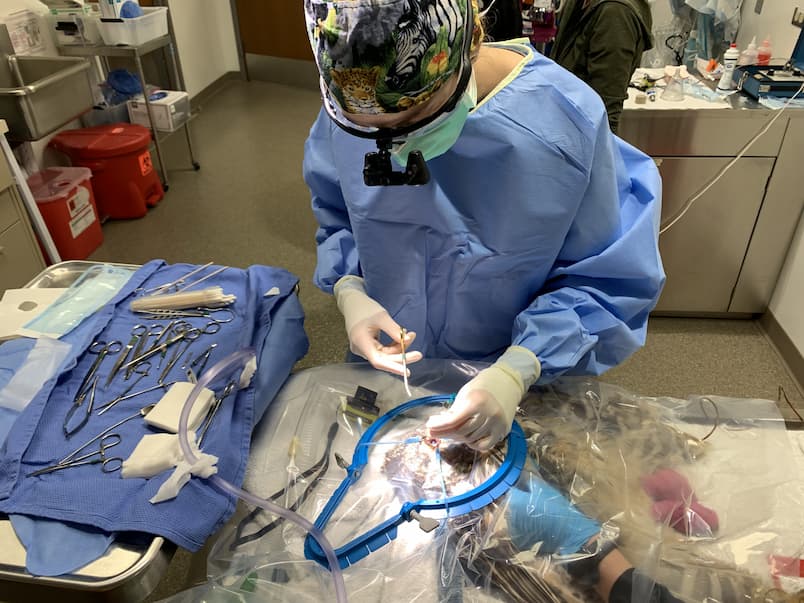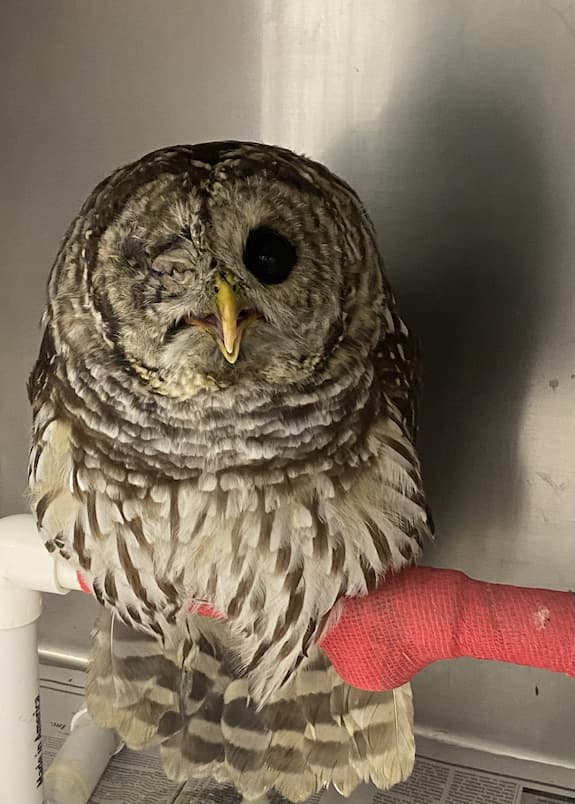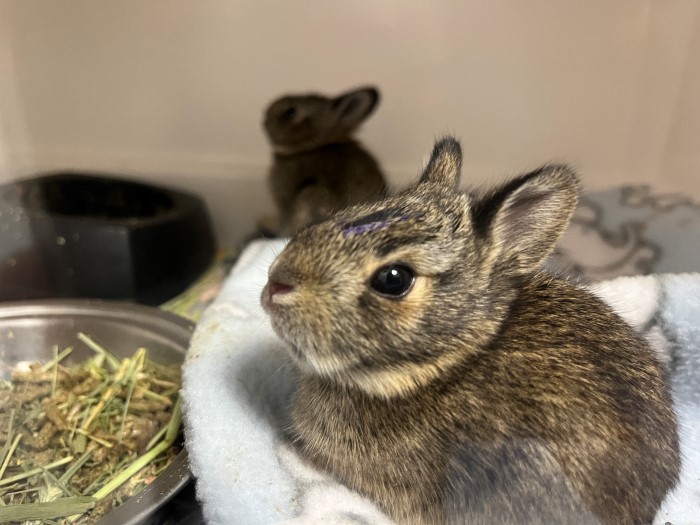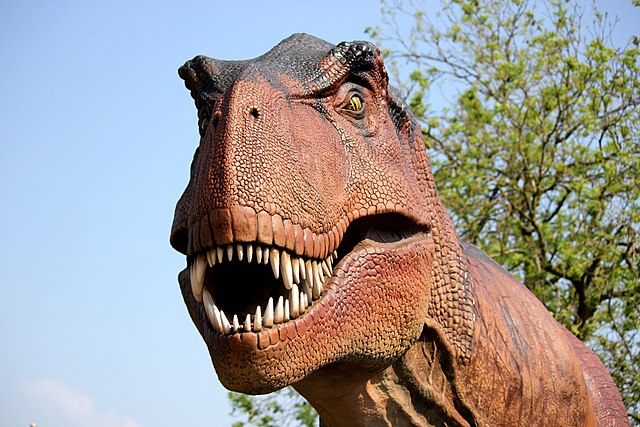This year, an injured, adult barred owl was brought to the Wildlife Medical Clinic for care after being hit by a bus. Barred owls are native to eastern North America and live an average of 8-10 years in the wild. They do not migrate, and most will remain in a single area their whole lives. It is difficult to tell a female from a male barred owl because they show no obvious plumage differences. Females are typically larger than males so if they are seen in pairs, it can be assumed that the larger of the two is female. So, by observation of our patient alone, we could not definitively say if they were a male or a female.
On initial exam, this patient’s right eye was swollen shut, and their beak had sustained a fracture. Miraculously, they had not sustained any other fractures to their wings or legs. However, they were not acting appropriately and had a low heart rate, which can result from head trauma and an increase in intracranial pressure. This patient was given medications to reduce intracranial pressure and for pain management. The next day, the swelling around the eye had reduced enough to do a full ophthalmic(eye)exam. This exam found that the iris of the right eye had become detached, and the lens was luxated. The iris is the colored part of the eye that contains muscles which control the size of the pupil. The lens is a clear, disk-shaped structure that sits behind the iris and focuses light onto the retina at the back of the eye. The eye is a very complex structure that needs all its individual parts to work together to provide an animal with sight. The extent of the damage found in this patient’s right eye suggested that they no longer would have vision in that eye. Barred owls fall into a group of birds known as “raptors.” Raptors are a type of bird that hunt live prey. Owls are the only raptors that do not rely solely on their vision for hunting. All other raptor species require both of their eyes to be efficient hunters and survive in the wild. Luckily for this patient, owls rely heavily on their sense of hearing when hunting and therefore they are the only type of raptors that may be released back into the wild with vision in only one eye.

Due to the severe trauma to the right eye and its lack of functionality, we opted to remove it. Our goal is always to set our patients up for success once they are released back into the wild. If the eye was left alone, this patient could have had problems with it after release. This eye could have caused pain, inflammation or even become infected. The eye was removed by a surgical procedure called evisceration. This procedure removes all the intraocular contents while preserving the outer shell and muscle attachments of the eye. These structures are preserved to avoid damaging middle ear structures or facial muscles. The back of an owl’s eye comes into close contact with structures used for hearing. In fact, you can see the back of their eye when looking into their ears! Damaging the bones of the ear would impair an owl’s ability to hear and hunt effectively. So, the preservation of these structures was a top priority during our patient’s surgery.
Dr. Lang, one of the zoo med house officers, did an amazing job with this surgery! With the help of our students who monitored anesthesia throughout the procedure, Dr. Lang successfully removed the contents of the eye without damaging any other structures. Best of all, our owl patient recovered well afterwards! This patient received around the clock care in the WMC while they recovered from surgery. One week later, this patient received a clean bill of health from Dr. Lang and was ready to be transferred out of the hospital. This owl was transferred to a licensed wildlife rehabilitator, where they have started the next part of their journey back to the wild. While at the rehabilitation facility, this former patient will practice flying and hunting with one eye. Once they are ready, they will be released to live out the rest of their life in the wild. Thanks to the care provided by all the dedicated volunteers here at the Wildlife Medical Clinic, this owl now has a second chance at a full life!
Written by Crystal Acevedo, Class of 2024




